Space
Can humans endure the psychological torment of living on Mars?
Published
2 weeks agoon


Can humans endure the psychological torment of living on Mars?
Alyssa Shannon is a registered nurse at UC Davis Medical Center. One day, on his way to the university hospital, NASA called him and told him that he had been selected for a mission to Mars. That same morning, Nathan Jones, an emergency room physician in Springfield, received a similar call. He immediately thought of his family and told himself that if you accept this opportunity, you will have to let them go. However, he couldn’t turn down NASA’s opportunity and convinced himself that Mars was his destiny.
The Mars Crew Health and Performance Probe Analogue Mission, or CHAPEA for short, will not actually send selected individuals to Mars, but rather will accurately simulate the first human journey to Mars and pave the way for sending the first humans to Mars, possibly by 2040.
According to NASA, humans will one day travel to Mars. In 2018, NASA estimated that the first humans would land on Mars “by the late 2020s at the latest.” The date for the first human mission has changed slightly, but despite the technical hurdles, it will definitely happen one day. Rachel McCulley, until recently the deputy director of NASA’s Mars campaign, has compiled a list of 800 problems that must be solved before the first human mission can be launched.
Many of the items on the list deal with the mechanical problems of transporting people to a planet that never gets closer than 54.6 million kilometers to Earth. Keeping people alive in toxic soil and unbreathable air, bombarded by solar radiation and galactic cosmic rays, without access to immediate and safe communications to bring them back to Earth more than a year and a half later, are some of the challenges of a trip to Mars.
Other problems involve technical details too obscure for McCulley to explain. But he has no doubts that NASA will overcome these challenges. Of course, what NASA and no one else knows yet is whether humanity will be able to overcome the psychological torment of living on Mars.
CHAPEA’s mission addresses human rather than technical questions. For 378 days, four ordinary volunteers will experience the conditions of human life on Mars as much as possible. They received instructions, feedback, and full supervision from Mission Control. These people eat astronaut food, perform basic experiments, perform maintenance tasks, answer endless surveys, and enjoy organized downtime. This level of extreme realism is necessary to ensure that the experiment correctly determines whether humans can live millions of kilometers away from their acquaintances.
The experimenters wanted to know if the crew could eat astronaut food for hundreds of days without losing their appetite, weight or positive attitude. Can they live in a confined space with strangers? Can they maintain a cohesive professional environment without contact with the ground? Such questions are of the utmost importance because no mission to Mars can succeed if Martians cannot maintain their health, happiness, and, most importantly, their sanity.
If Martians cannot maintain their mental health, no Mars mission will be successful
NASA’s goal of the simulated mission was to see if subjects could thrive in an environment designed to closely resemble Mars. NASA launched the program in August 2021 with a “Mars Calls” announcement on its website. Participation in CHAPEA, unlike most NASA missions, was open to the general public, or at least to a broad segment of the public: citizens or permanent residents between the ages of 30 and 55 with a master’s degree or higher in science, technology, engineering, and mathematics. Applicants were told that the experience was “mentally difficult”.
NASA offered four golden tickets to travel to a simulated settlement called Dune Alpha; The 158 square meter building was built inside a large warehouse at the Johnson Space Center in Houston. This settlement was built using 3D printing technology and instead of ink, Martian regolith was used. NASA did not have sufficient amounts of Martian regolith, so a special orange material called lavacrete was used, which was removed layer by layer from a 3D printer.
The residence has four identical cells that serve as bedrooms, a lounge, a television, and four chairs. There are also several desks with computer monitors, a medical station, and an agricultural garden in the settlement. Garden plants considered for mental health: Growing plants may have “psychological benefits for astronauts living in an isolated environment far from Earth,” says one researcher. The rooms have different heights to avoid the monotony of the space. The yard is shaped like a box filled with red sand and has two treadmills for the crew to practice “space walking”. The walls of the courtyard are covered with murals of Martian rocks and there are no windows.
The duration of the trial is the most obvious violation of the truth. Orbital geometry dictates that the shortest round-trip mission to Mars would take about 570 days, and this scenario might occur once every 15 years. A typical trip to Mars would take at least 800 days.
NASA has declined to disclose details of the 378-day confinement, which ends on July 6, 2024, to preserve the integrity of the experiment. NASA only emphasized that participants would experience “resource limitations, equipment failures, communication delays, and other environmental stressors.” For example, the crew on the Mars mission must form lasting emotional bonds with strangers and rely on each other for comfort. The crew must respond to any emergency situation on their own without any intervention or guidance. They must cope with not being able to care for a sick child, a grieving spouse, or a dying parent.
Future travelers to Mars must not only endure all these conditions alone but also pursue this opportunity with a determined and honest purpose in order to earn the privilege of long-duration space travel. They must accept that for at least 570 days, they will be the most isolated humans in the history of the world.

How does isolation affect performance?
Alyssa Shannon had dreamed of Mars since she was a child and knew she could endure the hardships and long periods of isolation. Nathan Jones also felt that this mission was designed for him. But professional observers of America’s space programs, a group of NASA historians, ethicists, and advisers who spend much of their careers studying the future of space exploration, have raised the question: What does NASA want to learn from the CHAPEA mission that it doesn’t already know?
The psychological damage of social distancing is well understood. Everyone knows what isolation does to a person. Johnson Schwartz, a philosophy professor who studies the ethics of space exploration, says: “What ambiguity is left when you lock people in a room for a year? “Just because the room is painted to look like Mars doesn’t mean the results will change.”
Monotony prevents people from performing the most basic tasks
The sources of Johnson Schwartz’s talk are 80 years of study in the field of isolation. The study of isolation began in World War II. At the time, the British Royal Air Force was concerned about the performance of pilots during solo flights. The officers noticed that the longer the pilot stayed in the air, the fewer submarines he detected. Psychologist Norman McWorth also recognized that the monotony of the mission is to blame for this. The monotony of the mission made the pilots unable to perform even the most basic tasks.
The results of Mackworth’s study inspired a series of studies by psychologist Donald O. Hebb from McGill University. Confirming McWorth’s findings, Hebb added new details. Monotony not only causes intellectual weakness but also leads to a “change in behavioral approach”. In Hebb’s experiment, his students slept and thought about their studies and personal problems. Then they would reminisce and recreate their movies or travels. Some also count to incredibly large numbers.
However all participants eventually lost the ability to focus. Several people also reported “blank periods” during which they thought about nothing. The next step was illusion. The hallucinations made people vulnerable, and long after the experiment was over, they believed the hallucinations were real.
Hebb’s findings inspired isolation studies. Individuals were confined in different locations and all results were consistent. In addition to attracting neuroscientists and psychologists, the experiments also attracted the attention and funding of the US intelligence community. The findings were included in “forced counter-espionage interrogations” or what is now called “brainwashing” or “psychological torture”.
Isolation studies were also closely monitored by the Air Force, which led the fledgling US space program before NASA was formed in 1958. Concerned that spaceflight might drive astronauts crazy, the Air Force conducted the first test similar to CHAPEA. The astronauts in this experiment were confined for a week in the cockpit of the spaceship, which was slightly larger than a coffin. The pilots were assigned a large number of technical tasks and were given large quantities of amphetamines.
The experiment followed a familiar pattern: initial high spirits gave way to a “gradual increase in irritability” and suddenly turned to “open hostility.” Many participants experienced hallucinations, with one pilot even abandoning the test after three hours and seeking psychiatric care.
In all isolation experiments, initial high spirits eventually gave way to irritability, violence, and hallucinations.
Several other similar studies were conducted before all research was stopped by the Mercury Space Program. Since the official start of the US space program in the early 1960s, astronauts have not suffered from any obvious psychological distress during successful solo missions, much to the relief of researchers. All long-duration space travel took place in Earth orbit, and crews were easily able to communicate with Earth. Government agencies continued to investigate the effects of isolation, but NASA did not.
NASA didn’t have a solution to the problem of isolation in space, and it didn’t need to, until half a century later when a new challenge arose: a human mission to a planet so far away that it would take at least 22 minutes for a cry for help to travel through the solar system. slow
The delay in communication worried CHAPEA crew members and families. All contact with the settlement is timed by the time it takes to send the information from Earth to Mars. Even exchanging short sentences like “How are you? “Good” also lasts at least 44 minutes.
But “44 minutes” is considered the best possible case, since every connection must flow through a connection point. Any information unit must wait in a digital queue, with priority given to the most urgent signals and smallest data packets. As a result, any normal human conversation with the earth is unthinkable. Also, there will be no contact during a three-week period in the middle of the experiment that marks the furthest distance between Earth and Mars.

The selected CHAPEA crew respected NASA’s decision on the mission, but if they wanted to better imagine the year ahead, they should study an earlier series of Mars simulations that shared some goals with the CHAPEA mission. For example, the HI-SEAS Analog Space Mission and Space Exploration Simulator in Hawaii simulated trips to the Moon and Mars missions between 2013 and 2017.
Civilians on the HI-SEAS mission were selected to live in a habitat in Hawaii for 12 months. The mission investigated and studied various nutritional and “psychosocial” benefits, as well as volunteers’ behavior and mental alertness and coping strategies developed to resist isolation.
Once Upon a Time I Lived on Mars is the memoir of Keith Green, one of the original HI-SEAS crew, and includes chapters entitled “On Boredom”, “In Isolation” and “Dreams of Mars, Dreams of Earth”. Green explains how the monotony changed his mission. “At that time mental fatigue had become my main state of mind,” he writes. The crew barely slept, were under constant surveillance, and scheduled leisure seemed a little forced.” The slightest provocation drove Greene mad, and he soon found himself missing out on everyday life on Earth.
The HI-SEAS mission followed the Mars 500 mission, the longest Mars simulation mission ever. Mars500, operated by the Russian Institute of Biomedical Problems, put a six-man crew together on a synthetic Mars for 520 days, between June 2010 and November 2011, in a synthetic spacecraft and a synthetic landing module.
Russian experimenters hypothesized that over time, astronauts would lose motivation, work less, and suffer from feelings of extreme isolation. After the experiment was over, the scientists announced that the hypotheses were “largely confirmed.” Crews lost confidence in their commanders and mission control, communication became poor, nutritional problems developed, and people became homesick and depressed. “It’s not easy to spend 520 days,” said Wang Yu , one of the participants who lost about 10 kilograms of weight and most of his hair. It is impossible to be happy all the time. “I am human, not a robot.”
Despite the previous results, the desire to simulate life on Mars still seems insatiable. CHAPEA is just one of dozens of NASA’s current analog experiments. One of Hera’s other missions is; A habitat that keeps four participants in isolation for 45 days. Since NASA ended participation in HI-SEAS, a variety of public and private organizations have continued the missions. The private association of the Mars Society has been operating several research bases in the Utah desert and the remote islands of northern Canada for years. Analogues of Mars have also been performed in Dome C of the Antarctic Plateau, the semi-arid region of northeastern Brazil, ice caves in Austria and Oman.
The effect of selected isolation is not the same as imposed isolation
The first travelers to Mars are likely to have the same psychological profile as Shannon, Jones, and two other participants: Ross Brockwell, a structural engineer and director of general operations, and Kelly Heston, a stem cell biologist. All four are NASA enthusiasts, in good physical health, and welcome long periods of isolation. These people themselves chose to spend a period of isolation and restriction.
Louise Hockley, an expert on social isolation, emphasizes that psychological responses are strongly influenced by whether isolation is chosen or imposed on individuals. A prisoner sentenced to life imprisonment usually suffers more than a monk who has taken a vow of silence. But Hockley points out that participants, no matter how well supported, are not autonomous. “Even if the crew is OK, what happens to the family that’s left behind?”
However, the designers of CHAPEA do not seem to have an understanding of the history of isolation and social isolation studies. In interviews, they also downplayed the findings of previous trials, including HI-SEAS. CHAPEA principal investigator Grace Douglas admitted she was “not entirely familiar” with the previous four-year trial, saying: “I don’t believe they met our performance criteria. “Our assessment is at a higher level of detail and will be more extensive.”
Rachel McCulley is NASA’s CHAPEA Funding Officer. When asked what he hopes to learn from the mission about human psychology, he said, “The big reason I funded the mission is that I want to know exactly how much food is needed for a Mars mission.”
But what about the psychological aspect of the mission? How do people cope with loneliness and monotony? McCauley is a solid fuel propulsion system engineer and his goal was to determine the spacecraft’s weight only. He could estimate the mass of everything, but he wanted to know how much food the four stressed astronauts would consume in 378 days and how much clothing they would need.
Investigating psychological issues is NASA’s second priority. Mathias, a historian of isolation, asks whether empirical logic can justify another study of isolation. In his opinion, these experiments are “a way to colonize Mars, or a form of wish-fulfillment, or, in other words, just a game of cosplay.” Analog experiments reflect utopian promises about a future for humans on Mars. A human mission to Mars is not the highest ambition in space programs, but a small step for mankind before a giant leap in the habitation of other planets.
The inhabitants of Mars will turn from humans into a modified species of “Martians”.
Five months before the CHAPEA call, Dennis Bushnell, a 60-year senior scientist at NASA’s Langley Research Center, published a paper on the future of space exploration, commercialization, and habitation. He says colonizing Mars has always been conceivable for colonizing humans. He notes that the prospect has gone from “very difficult” to “increasingly feasible” in recent years.
Bushnell predicts that Mars colonists will “become a modified species.” Travelers who colonize Mars will become Martians over time due to reduced exposure to heat and radiation. The ultimate promise of NASA’s Mars mission is a chance to start over, not exactly as humans, but as Martians. If we can settle on Mars and enjoy a carefree life with no regrets, it stands to reason that we should no longer be human, we should be Martians.
But Mathias likens the constant testing of Mars to a traumatic repetition. The compulsion to rebuild is an irrational and futile attempt to undo a deep injury. “The urge to try to recreate a perfect world is always repeating the same mistake we made here,” he says. “We are not looking for Mars, we are mourning for Earth.”
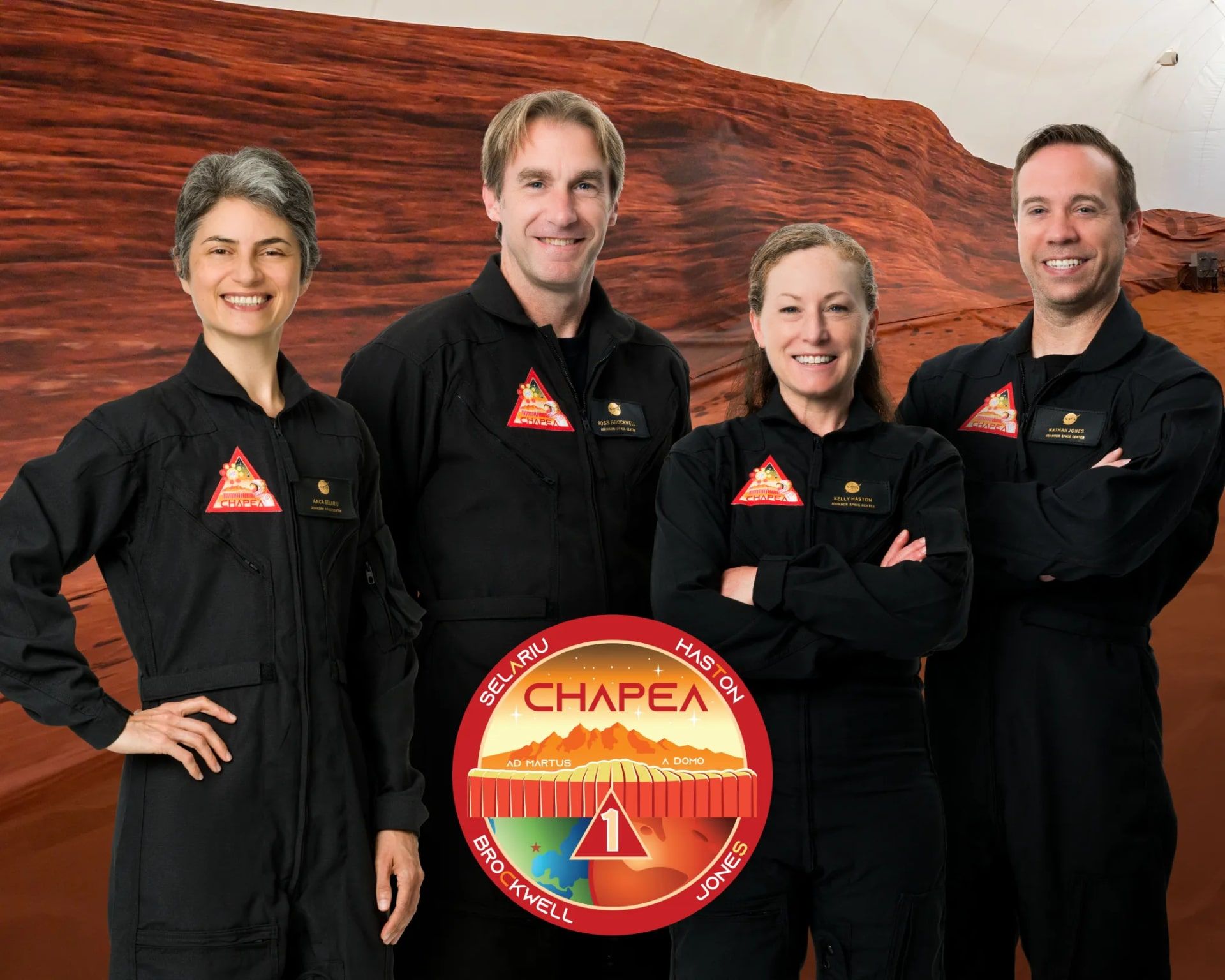 NASA released the official CHAPEA 1 crew portrait on June 25, 2023. From left to right: Anka Selario, Ross Brockwell, Kelly Heston, Nathan Jones.
NASA released the official CHAPEA 1 crew portrait on June 25, 2023. From left to right: Anka Selario, Ross Brockwell, Kelly Heston, Nathan Jones.
The four crew and two surrogates of the CHAPEA mission gathered together for a final month of training and evaluation a month before confinement to the settlement. Three weeks before arrival, NASA hosted a “Family Weekend” for the crew’s loved ones. Families visited the Johnson Space Center and interacted closely with the astronauts. The crew’s families agreed to share stress management techniques and pledged to keep in touch through a private Facebook page.
But Alyssa Shannon received a call five days before the mission began. He announced that NASA had removed him from the mission and had been replaced by U.S. Navy microbiologist Anka Selario. The reason for Alyssa’s removal was not released, but NASA investigators added that sometimes during final pre-mission tests, problems are found that are not “medically serious” but may pose a risk, such as an increased risk of kidney stones. Of course, this is just an example and the researchers refused to provide information.
On June 25, 2023, NASA’s YouTube channel broadcast footage of four CHAPEA 1 crew members standing on a platform in front of the settlement. Grace Douglas announced that the knowledge we gain here will help us send humans to Mars and return them home safely. Then, Douglas opened the simple white door of the settlement, the crew waved and entered. Douglas closed the door behind them. The happy voice of the crew could be heard from inside the settlement.


You may like
-

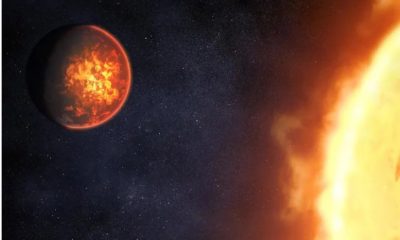


How to prevent the earth from being baked by the scorching sun?
-

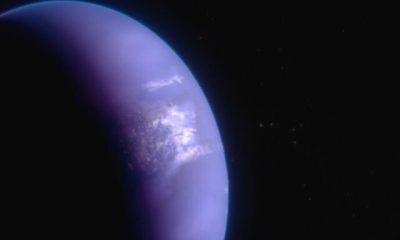


James Webb space telescope map of the climate of an exoplanet
-

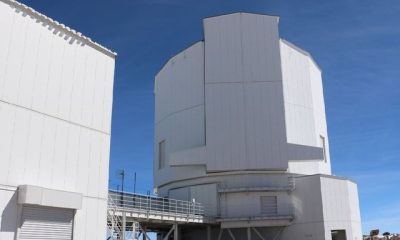


The highest observatory in the world officially started its work
-

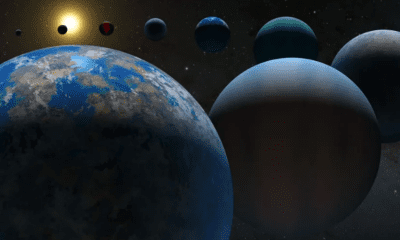


What is an exoplanet? Everything you need to know
-

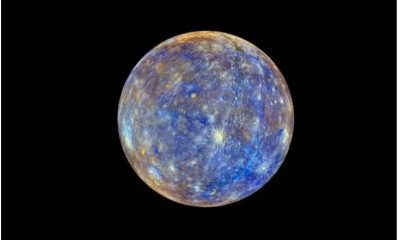


Seven surprising discoveries about the planet Mercury
-

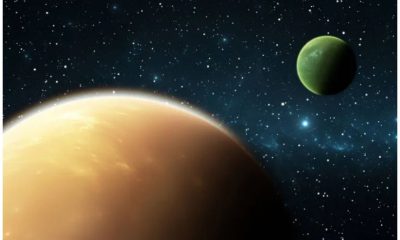


Why there is no gaseous moon in solar system?
Space
How to prevent the earth from being baked by the scorching sun?
Published
20 hours agoon
05/05/2024

How to prevent the earth from being baked by the scorching sun?
One day, the sun will enter a stage where life on Earth will no longer be possible and our planet will simply turn into a mass of iron and nickel. The good news is that if we do our best, we can keep our home livable even after the sun gets too hot.
Waking nightmare
The Sun will gradually become brutally brighter, hotter, and larger over time. Billions of years ago, the Sun was 20 percent dimmer than it is today when a series of molecules danced together to form living things. At that time, even the dinosaurs faced a fainter and smaller star.
Today, the sun is halfway through its hydrogen life and is still 4 billion years away from entering the death phase. However, in the next few hundred million years, the temperature and brightness that is giving life to our planet today will lead to its destruction. A few hundred million years is like a blink of an eye on a cosmic scale.
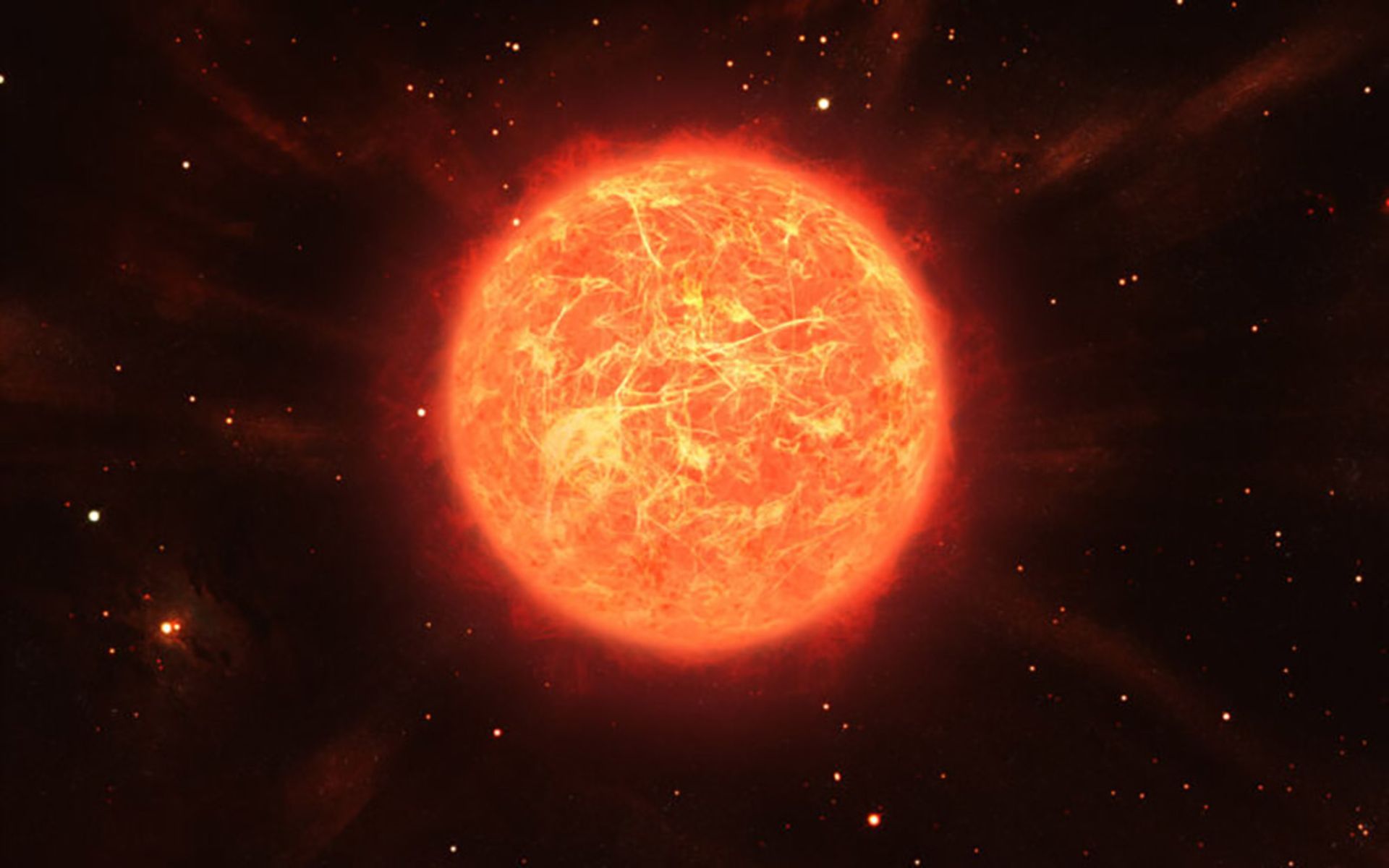 The sun is getting bigger and brighter day by day.
The sun is getting bigger and brighter day by day.
The sun sows the seeds of its destruction based on its fundamental physical properties. In the current conditions, our star consumes 600 million tons of hydrogen every second; So the atoms collide with each other in a nuclear inferno with a temperature of more than 15 million degrees Celsius. Of these 600 million tons, 4 million tons of hydrogen are converted into energy, which is enough to light up the entire solar system.
The fusion reaction is not completely clean and the resulting product is helium. Helium has nowhere to go because the deep convective cycles that continuously churn up the material inside the Sun do not reach the core, where helium is formed; Therefore, helium remains there in an unused, motionless, and stagnant form.
The sun consumes 600 million tons of hydrogen every second
At the present time, the Sun has not reached the high temperature and pressure in its core for helium fusion; So the helium stays there, increasing the overall mass of the nucleus without giving it anything else to fuse with. Fortunately, the sun can compensate for this process through hydrostatic balance.
The Sun is in constant equilibrium on the edge of a nuclear knife. On the one hand, energy is released from the fusion process, which, if left unchecked, can cause the sun to explode or at least expand. In front of this force, there is the gravitational weight of the sun, which exerts an inward force. If this force is released, the sun’s gravity will cause it to collapse and turn it into a black hole the size of an average city.
So what happens when an unstoppable force meets an irresistible force? A pleasant balance is established and the sun can continue to exist for billions of years. If for any reason the temperature of the inner nuclear inferno increases randomly, other parts of the star will also heat up and its outer layers will swell. In this way, the gravitational pressure decreases and the nuclear reactions slow down. If the Sun randomly contracts, more material will force itself into the core, where it will participate in the nuclear dance. The energy released as a result of this event causes the star to re-inflate to normal proportions.
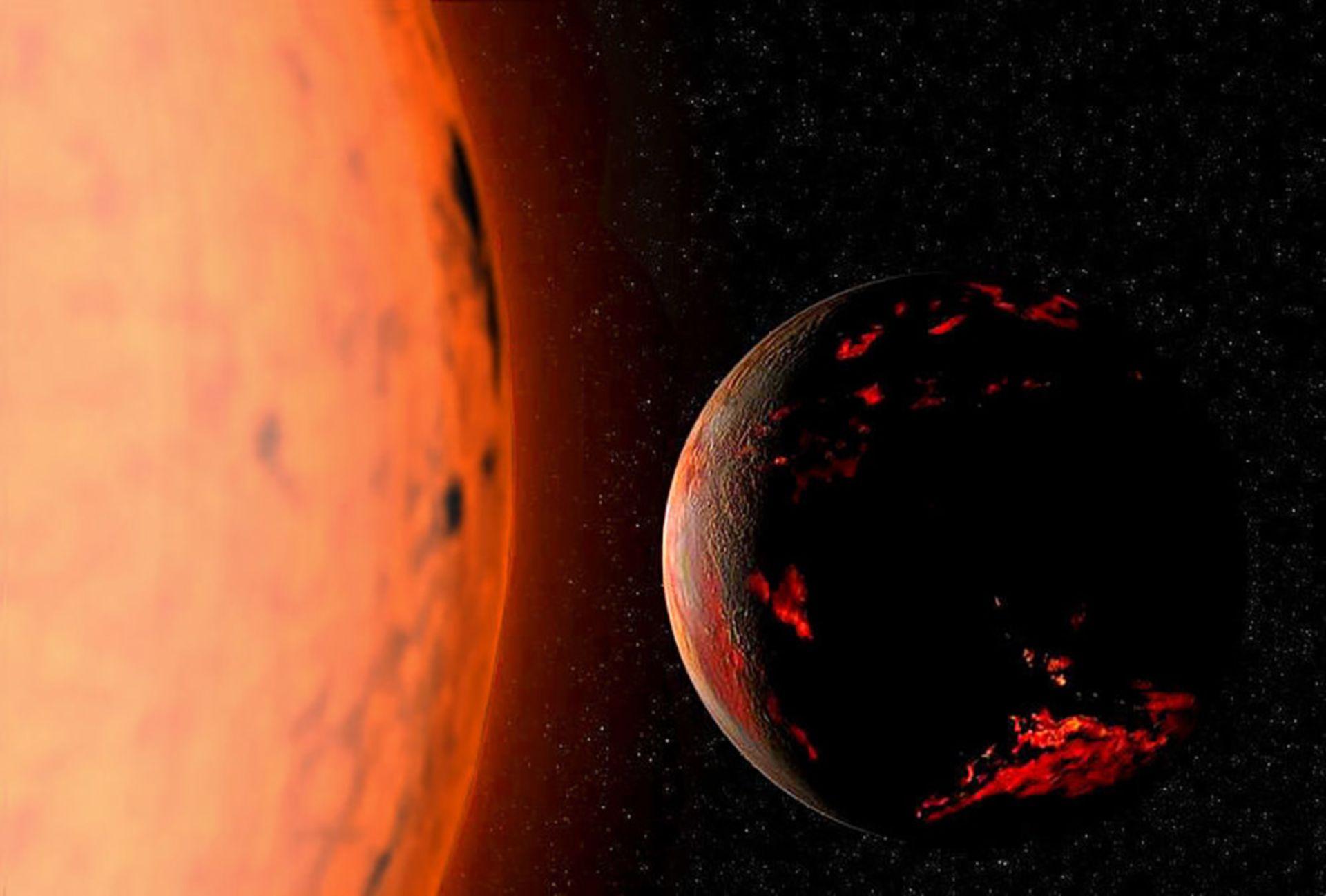 The sun will destroy the earth before it dies.
The sun will destroy the earth before it dies.
On the other hand, helium, which is a nuclear product, replaces hydrogen and disturbs the balance. In this state, the sun has no choice but to pull internally, because gravity is unyielding. Meanwhile, nuclear reactions intensify and increase the temperature, which eventually causes the sun’s surface to glow and expand.
Slowly, as helium continues to accumulate in the core of the Sun, or any star of similar mass, the Sun grows larger and brighter in response to this process. It is difficult to predict exactly when this glow will become catastrophic for the Earth, this issue is strongly related to the relationship between the rays, the atmosphere, and the ocean; But the general estimate is that we have about 500 million years before life on Earth becomes impossible.
The burning sun will increase the temperature of the earth’s surface. It evaporates at higher ocean temperatures. Since water vapor is an important greenhouse gas, a large part of it remaining in the Earth’s atmosphere leads to higher surface temperatures. Higher temperatures lead to more evaporation of the oceans, setting the stage for the greenhouse cycle. Finally, we will witness the escape of a large part of the earth’s waters into the atmosphere.
Without water to lubricate tectonic activity, tectonic plates stop moving. Without tectonic activity to pull carbon out of Earth’s atmosphere, the planet’s air density would increase dramatically. As a result, in a few hundred million years, we will become Venus, the twin planet of Earth, which experienced the same fate billions of years ago; Two dead worlds in the hands of their parent star.
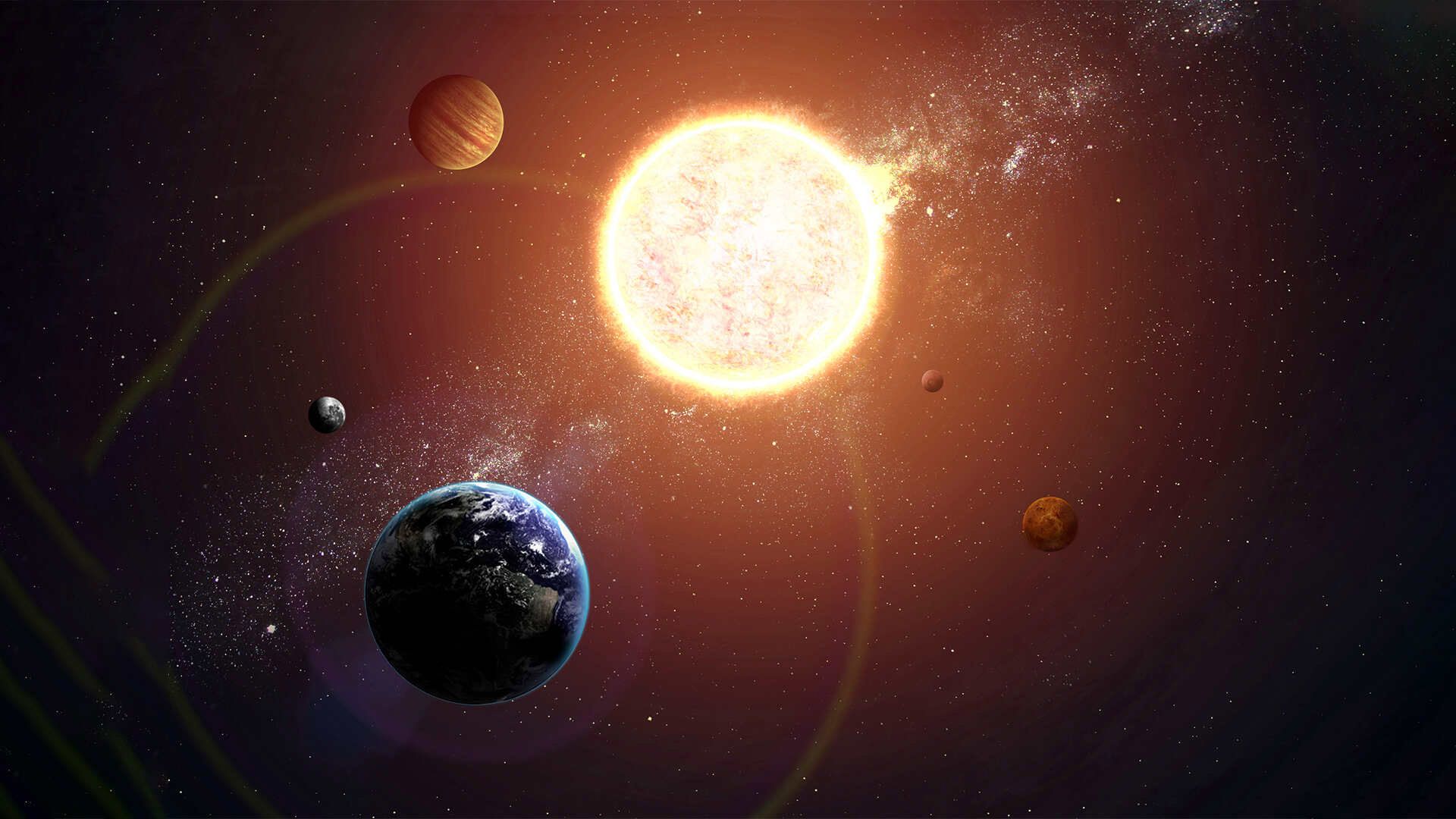 By shifting the earth’s orbit, it can be saved from the sun.
By shifting the earth’s orbit, it can be saved from the sun.
Change the position of the planet
The habitable zone is the region around a star where the temperature is suitable for the flow of liquid water on the surface of a planet. Temperatures near the star are too high to prevent any atmospheric complexity so that water exists only as vapor. Outside this range, the temperature is very low.
Earth is now roughly in the middle of the Sun’s life belt, Venus is on the inner edge, and Mars is almost outside. As the age of the sun increases and its brightness increases, the life belt will reach more distant parts of the solar system; So if we want the Earth to survive this process, we have to move it.
Moving a planet will not be an easy task; But fortunately, we are dealing with vast astronomical time scales and we don’t need to move the earth today. In fact, we have hundreds of millions of years to plan this transition. To do this, we can use the same stabilizing force that keeps the planets in orbit around the sun, and that force is nothing but gravity.
The first thing we need to do is find an energy source. Raising the earth’s orbit requires a lot of energy, and this energy has to be supplied from somewhere. Fortunately, we can use the planet Jupiter. Since this gaseous world is 318 times heavier than Earth, its simple movement through the sky provides a surprising amount of kinetic energy, and a small amount can be borrowed.
We are almost 500 million years away from the destruction of the earth by the sun
Jupiter’s energy can be transferred to Earth through orbital interactions. To better understand this issue, suppose you are standing inside a wheeled platform on a railway track and a train is moving towards you. You can’t step out of the way of a train (because then the analogy wouldn’t be fun); So your only chance to survive is to move at least as fast as the train. Of course, if you simply let the train hit the counter, then your speed will match the speed of the train, but not in the way you’d expect.
Instead, you can reach into your pocket and pull out a bouncing meatball. Suppose, this ball is durable and indestructible. You throw the ball at the train. The ball hits the train and bounces back. Then you grab it and move forward a bit. With just a little practice, and through simple conservation of momentum, you’ll find that you can steal some of the train’s energy and give it to yourself and the rolling platform. The train barely notices these collisions, but you do. If you get enough power you can move on without facing disaster.
Now let’s return to the example of Earth and Jupiter. The above analogy is suitable for preventing Jupiter from colliding with our planet, except we use asteroids instead of bouncing balls. We can send asteroids on long orbits around Jupiter. In this scenario, the gravitational interaction between the planet Jupiter and the asteroid leads to an increase in the speed of the asteroid and, in turn, a slight decrease in the speed of the giant Jupiter. Then we can bring the asteroid back to Earth, rotate it in the opposite direction, and achieve the desired force by slowing down its motion.
Running the above process once doesn’t have much effect; So we have to repeat it for hundreds of millions of years so that the Earth can reach higher orbits and thus escape from the wrath of the sun. If our descendants can control this process, they can move the Earth into a safe zone of the habitable zone.
 The Sun loses mass through the solar wind or particle stream.
The Sun loses mass through the solar wind or particle stream.
Star setting
If you are not interested in changing the arrangement of the planets, but have the ability for super-engineering projects, we have another solution for you. The main problem with the sun is that helium is a natural product of our star’s fusion process. The hydrogen fusion ratio is defined based on the total mass of the Sun; The bigger a star is, the faster it burns, and in the same way, smaller stars burn at a slower rate; Therefore, if we want to limit the amount of helium production, we must slow down the fusion reactions. The easiest way is to reduce the total mass of the Sun.
Fortunately, the sun is naturally decelerating, but not fast enough. The surface of the Sun continuously emits an endless stream of tiny charged particles, which we call the solar wind. In terms of human-scale statistics, the amount of mass that the Sun loses through the solar wind is 1 to 2 million tons per second, which is an incredibly high rate; But this speed should be increased a little.
The Sun loses one to two million tons of mass every second through the solar wind
One way to speed up the mass loss of the Sun is to heat its surface with lasers or special rays, strong magnetic fields, or whatever mechanism our descendants choose. Heating the surface of the sun leads to an increase in the production of solar winds, and thus the speed of the sun’s mass loss increases; But high-energy particles that are released at high speed are not suitable for habitability on Earth, so they must be transported to a safe place.
One way to control the solar wind is to build a series of particle accelerator stations in orbit around the Sun’s equator. These stations continuously exchange charged particles and create a loop of current in the shape of the solar belt. This current loop creates a torus (donut-shaped) magnetic field that can transform the solar wind into polar outflows in the direction of the sun’s rotation axis and safely remove harmful particles from our planet.
The torus magnetic field can be used to compress the star. According to this method, first, the stations are turned off and thus the particles fall into the sun. Then, by turning on the stations, the magnetic field is interrupted and the falling process is reversed. The magnetic field surrounding the sun’s equator is compressed, forcing particles to be repelled from the sun’s poles.
If our descendants are advanced, they can capture the elusive solar wind and use it for other purposes, such as fusion reactor systems to power an entire facility, and if they are creative, they can direct the outflow of the solar wind in one direction and use it as a booster rocket. use solar to guide the solar system to new points in the Milky Way or even outside the galaxy.
Of course, the technique of moving the star reduces the brightness of the sun; Because despite the lower mass, the fusion reactions take place in a quieter atmosphere, which reduces the power and dimensions of our star. In this way, the life belt moves to an inner part. We may not realize this at first, because the things we do are in opposition to the natural tendency of the life belt to move outward; But eventually, after the Sun has lost 10-20% of its mass, we have to move the Earth to the inner part of the life belt to keep it in the right spot.
In the end, we are left with a smaller, long-lived star. The smallest red dwarfs with a mass of a little more than one-tenth of the Sun can live for trillions of years; But at the same time, it has a more chaotic nature, because due to their low mass, they are subject to stellar explosions that periodically double their brightness. If our descendants want to take this path to increase the life of the sun, they must definitely prevent these explosions.
All in all, if humanity can survive for billions of years, it will probably become an interplanetary or interstellar entity. In this situation, there will be no need to save the land. Perhaps our distant descendants can preserve the land from which they sprang as a mark of respect. Perhaps this is necessary because no other world is as suitable for life as Earth. Ultimately, perhaps, it is an art project, an opportunity to create beauty and wonder on an interplanetary scale, before the fires of nuclear fusion die out and our star breathes its last. The last chapter of the story ends the billions of years of life of the solar system.
Space
James Webb space telescope map of the climate of an exoplanet
Published
4 days agoon
02/05/2024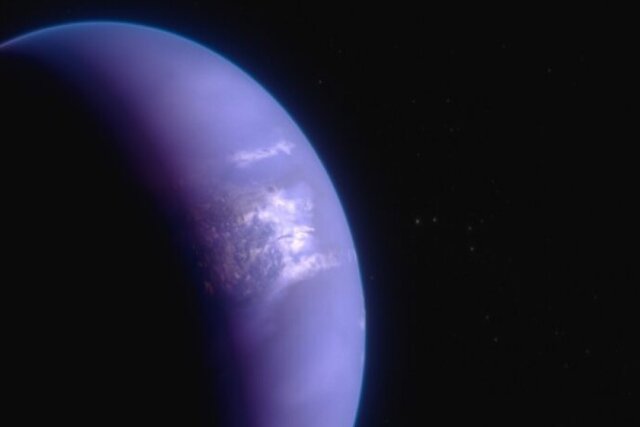

The James Webb Space Telescope helped researchers map the climate of an exoplanet.
James Webb space telescope map of the climate of an exoplanet
An international team of researchers has successfully used the James Webb Space Telescope to map the climate of a hot gas giant exoplanet.
According to NASA, detailed observations in a wide range of mid-infrared light, along with 3D weather models and previous observations from other telescopes, show the presence of dense, high clouds that cover the sky during the day and night, as well as show tropical winds. They say they are merging atmospheric gases at 5,000 miles per hour around the exoplanet WASP-43 b.
This is the latest demonstration of exoplanet science, now made possible by James Webb’s extraordinary ability to probe temperature changes and detect atmospheric gases trillions of miles away.
The exoplanet WASP-43 b is a type of “Hot Jupiter”. This Jupiter-sized planet is made mostly of hydrogen and helium and is much hotter than the other giant planets in the solar system. Although its star is smaller and cooler than the Sun, WASP-43 b orbits at a distance of 1.3 million miles, less than one-twenty-fifth the distance between Mercury and the Sun.
With such an orbit, the planet is tidally locked; This means that one side is constantly lit and the other side is in permanent darkness. Although the night side never receives any direct radiation from the star, strong eastward winds carry heat from the day side around.
Since the discovery of the planet WASP-43 b in 2011, it has been observed by several telescopes, including the Hubble Space Telescope and the Spitzer Space Telescope. “With the Hubble Space Telescope, we can clearly see that there is water vapor on the day side of the planet,” said Bay Area Environmental Research Institute (BAERI) researcher Taylor Bell. Both Hubble and Spitzer showed that clouds may exist on the night side, but we needed more detailed surveys with the James Webb Space Telescope to begin mapping temperatures, cloud cover, winds, and atmospheric composition more precisely across the planet.
Although WASP-43 b is too small, faint, and too close to its star to be seen directly by a telescope, the planet’s short orbital period of just 19.5 hours makes it ideal for “phase curve spectroscopy.” The phase curve spectroscopic method involves examining small changes in the brightness of a star-planet system as the planet orbits the star.
Because the amount of mid-infrared light emitted by a body depends largely on how hot it is, James Webb’s brightness data can be used to calculate a planet’s temperature.
For more than 24 hours, the research team used James Webb’s Mid-Infrared Instrument (MIRI) to measure the light of the WASP-43 system every 10 seconds. “By observing an entire orbit, we were able to calculate the temperature of different sides of the planet as it rotated into view,” Bell explained. Based on these calculations, we were able to create a map of the temperature of the entire planet.
Measurements show that the air temperature on the day side of the planet is close to 1250 degrees Celsius on average; While the temperature of the night side reaches 600 degrees Celsius and is significantly cooler. These data help locate the hottest spot on the planet, which is slightly eastward from the point receiving the most stellar radiation. This change occurs due to the blowing of winds that move the warm air towards the east.
“Michael Roman” (University of Leicester) researcher and one of the researchers of this project said: “The fact that we can map the temperature in this way is a real proof of James Webb’s sensitivity and stability.”
To interpret the map, the researchers used complex 3D atmospheric models, similar to those used to understand weather and climate on Earth. Analyzes show that the night side of the planet is probably covered in a dense and high layer of clouds, and this layer prevents part of the infrared light from reaching space. As a result, although the night side is very warm, it appears dimmer and cooler than when there are no clouds.
The broad spectrum of mid-infrared light taken by James Webb makes it possible to measure the amount of water vapor and methane around the planet. “Joanna Barstow”, a researcher at “The Open University of UK” and one of the researchers of this project, said: “James Webb has given us the opportunity to find out exactly which molecules we see and put limits on their abundance.”
The observed light spectra show clear signatures of water vapor on the planet’s nightside and dayside, providing additional information about the density of clouds and their height in the atmosphere.
Read more: The highest observatory in the world officially started its work
Also, the researchers were surprised to find that the data showed a lack of methane everywhere in the atmosphere. Because the day is too hot for methane to exist, methane should be cooler, stable, and detectable at night.
“The fact that we don’t see methane tells us that the wind speed on WASP-43 b must be about 5,000 miles per hour,” Barstow explained. If the winds move the gas from the day side to the night side of the planet and back again quickly, there won’t be enough time for the chemical reactions to produce detectable amounts of methane on the night side.
Researchers believe that because of this wind-driven mixing, the chemistry of the atmosphere is the same across the planet. This result was not clear in previous researches that were conducted with Hubble and Spitzer telescopes.
This research was published in “Nature Astronomy” magazine.
Space
The highest observatory in the world officially started its work
Published
5 days agoon
01/05/2024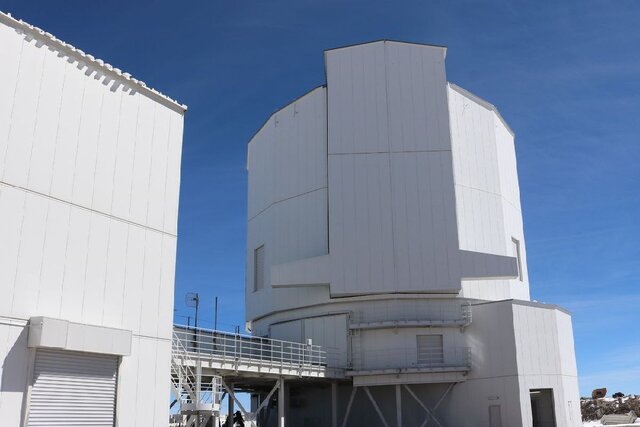

The Tokyo Atacama University Observatory, which has the title of the highest observatory in the world, is now ready for work.
The highest observatory in the world officially started its work
A new telescope, which is introduced as the highest observatory in the world, has been officially opened.
Tokyo Atacama University Observatory (TAO), which was first designed 26 years ago to study the evolution of galaxies and exoplanets, is located on top of a high mountain in the Chilean Andes at an altitude of 5,640 meters above sea level. . The height of this telescope even exceeds the “Atacama Large Millimeter Array” (ALMA), which is located at an altitude of 5050 meters.
The TAO observatory is located in a region where the high altitude, sparse atmosphere, and perpetually dry weather are deadly for humans, but it is an excellent spot for infrared telescopes like TAO because their observational accuracy relies on low humidity levels that keep the Earth’s atmosphere at wavelengths. Infrared makes it transparent.
Yuzuru Yoshii, a professor at the University of Tokyo (UTokyo), said: “Building a telescope on the top of the mountain was an incredible challenge, not only from a technical point of view but also from a political point of view.” I communicated with the indigenous people to ensure their rights and views were taken into account, with the Chilean government to obtain permits, with local universities for technical cooperation, and even with the Chilean Ministry of Health to ensure that people could climb safely at that altitude. to work
He added: The research that I have always dreamed of doing, thanks to everyone involved, will soon become a reality and I could not be happier.
The 6.5-meter TAO telescope has two science instruments designed to observe the world in infrared light. One such instrument, called SWIMS, will image galaxies in the early universe to understand how they formed from the merger of dust and pristine gas. Despite decades of research, the details of this process remain obscure. The second device, MIMIZUKU, will contribute to the mission’s overall goal by studying the primordial dust disks from which stars and galaxies formed.
Riko Senoo, a student at the University of Tokyo and a researcher on the TAO project, said: “The better astronomical observations of the real object, the more accurately we can reproduce what we see with our experiments on Earth.”
Masahiro Konishi, a researcher at the University of Tokyo, said: “I hope that the next generation of astronomers will use TAO and other ground-based and space-based telescopes to make unexpected discoveries that challenge our current understanding and provide the unexplained.”
Read more: Why there is no gaseous moon in solar system?
Before the newly opened telescope was built, Yoshi and his colleagues in 2009 also assembled a 1-meter telescope on top of Mt. This small telescope called “miniTAO” imaged the center of the Milky Way galaxy. Two years later, miniTAO received the Guinness World Record for being the highest astronomical observatory on Earth.
Although the observatory has been the talk of the town for the past 26 years, work on its construction site began in 2006. At that time, the first road to reach the summit was paved, and shortly after, a weather monitoring system was installed there.


How to prevent the earth from being baked by the scorching sun?


James Webb space telescope map of the climate of an exoplanet


The highest observatory in the world officially started its work


Many mental disorders have physical roots


How to connect to the TV with a Samsung phone?


The secret of the cleanest air on earth has been discovered


Asus Zenbook 14 OLED laptop review


How extinct animals could be brought back from death?


Xiaomi Pad 6S Pro review


Testing a vaccine that reduces liver tumors
Popular
-



 Technology9 months ago
Technology9 months agoWho has checked our Whatsapp profile viewed my Whatsapp August 2023
-



 Technology10 months ago
Technology10 months agoHow to use ChatGPT on Android and iOS
-



 Technology9 months ago
Technology9 months agoSecond WhatsApp , how to install and download dual WhatsApp August 2023
-



 Technology11 months ago
Technology11 months agoThe best Android tablets 2023, buying guide
-



 Humans1 year ago
Humans1 year agoCell Rover analyzes the inside of cells without destroying them
-



 AI1 year ago
AI1 year agoUber replaces human drivers with robots
-



 Technology10 months ago
Technology10 months agoThe best photography cameras 2023, buying guide and price
-



 Technology11 months ago
Technology11 months agoHow to prevent automatic download of applications on Samsung phones
